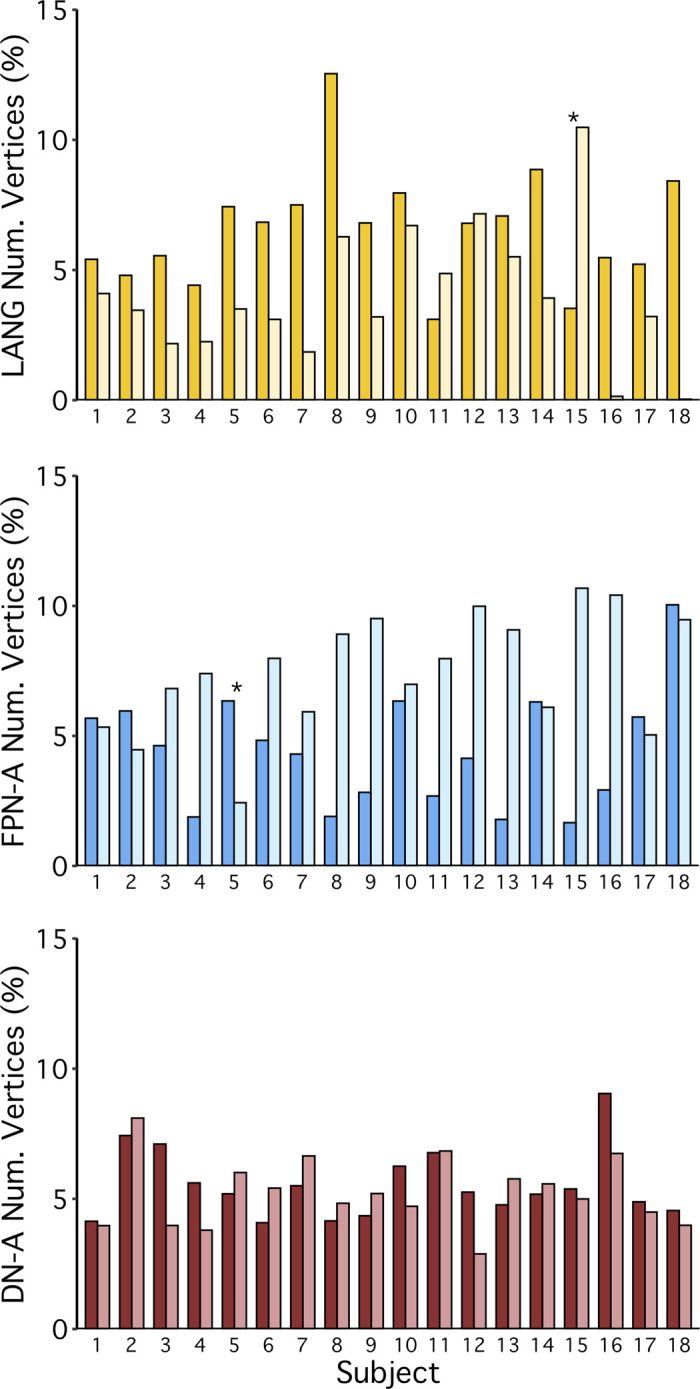Fig. 22.

The language network is left lateralized in a majority of individuals, with notable exceptions. Extending the composite analyses conducted using all 18 subjects from the original, replication, and triplication cohorts (studies 1–4; Fig. 21), the %total network vertices in the left and right hemispheres was plotted for each subject. The darker-shaded bars represent the left hemisphere, and the lighter-shaded bars represent the right hemisphere. Graphs show the %vertices from each hemisphere contained within the language (LANG; top), frontoparietal control network A (FPN-A; middle), and default network A (DN-A; bottom). The LANG network was left lateralized in 15 out of the total 18 subjects. Of the other networks, FPN-A showed a strong and consistent right-lateralized pattern, and DN-A showed a consistent bilateral pattern. Note that the bilateral pattern for DN-A observed in the group average (see Fig. 21) is consistent across individuals and not a result of mixed strong left and right lateralization in different subjects. *Interesting subjects that showed clear evidence for opposite patterns from the group norm. Subject S15, by all analyses (see text), displays a pattern of flipped lateralization of the language network.
